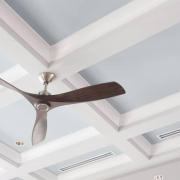Is A Furnace Leaking Water Dangerous?
Dealing with leaks is not ideal for any homeowner. It doesn’t matter where the leak is coming from, no homeowner wants the nightmare of water leaking into the home. The moment that a water leak occurs in your home, you will want to get it fixed. Mildew smells, damage to your structures, and mold growth is just a few areas of a disaster that can occur with a water leak. Leaking water from your furnace is not a good scenario. Is a furnace leaking water dangerous? Yes, water leaking from your furnace can pose the risk of electrocution.
Let’s take a look below at how this could occur.
How Many Types Of Furnaces Are There?
Believe it or not, there are two types of furnaces. It is important to get to know which type of furnace you have in your home. Let’s take a look below at what makes each furnace unique.
- High-efficiency furnace (condensing) – This type of furnace has an annual fuel utilization efficiency (AFUE) of 90 percent or higher. Additionally, this furnace is the most commonly installed. This furnace uses a cooling exhaust to produce condensation. Consequently, its exhaust pipe is made from PVC plastic pipe.
- Standard-efficiency furnace (conventional) – This type of furnace has an annual fuel utilization efficiency (AFUE) of less than 90 percent. Since it is lower, this furnace is not as often installed. Additionally, this furnace does not create condensation. Consequently, its exhaust pipe is made of metal pipe.
If you really aren’t sure which type of furnace you have, simply look at the type of exhaust pipe that is installed. PVC exhaust pipe means it is condensing and metal pipe means it is conventional.

What Causes The Furnace To Leak?
Unfortunately, there are a few ways that a furnace can leak. Depending on the type of furnace you have will determine where the leak might come from. In most cases, a condensing unit could appear to leak water, whereas a conventional unit or non-condensing unit will not leak water. Let’s take a look below at why your furnace might leak water.
High-Efficiency Condensing Furnace
- Condensate pump – The average lifespan of a condensate pump is 3 to 5 years. Keep in mind that water will leak from the furnace if this pump fails.
- Condensate drain line – If the drain line gets clogged it will cause water to back up and leak from the furnace. Also, cracks or loose connections allow water to leak from the drain line.
- Inducer assembly – If there is a crack in the assembly, water will leak out. Condensation runs into the exhaust/flue pipe and flows toward the condensate drain hose. Condensation then leaves the condensate drain hose and enters the inducer assembly.
- Condensate drain hose – If the drain hose gets clogged, it will cause water to back up into the PVC exhaust pipe and cause water pools on your floor.
- Condensate trap – Dirt and debris are known to clog the condensate traps in the furnace. This trap must be kept clean and clear so that water doesn’t back up into the furnace and leak out.
Standard-Efficiency Conventional Furnace
- Clogged drain line – Just like in a high-efficiency condensing furnace, if the drain lines become clogged water will not exit the unit. As it gets backed up, the water will leak out.
- Damaged drain pan – When there is water on the floor around your furnace, this is a clear indication of a damaged drain pan. The purpose of the drain pan is to contain the water.
- Failed condensate pump – Any pump that gets clogged or breaks down will not be able to remove the water, and the water will leak.
- Frozen coil – A frozen evaporator coil will leak water from the ac unit. This will give the appearance that the furnace is leaking water when it is actually the ac unit.
Other Recommended Maintenance
Now that you understand why a leaking furnace can be dangerous, this would be a great time to understand how long it takes to replace a furnace. If the furnace is leaking it is highly possible a repair or replacement is needed. Consequently, knowing how long it will take to replace the furnace allows you to schedule your work around the time of installation.
Next, read up on what you need to do if the power goes out and your furnace needs to be re-lit. Relighting a furnace is fairly easy to do as some pilot lights can be lit quickly. Be sure to read up on how to relight a pilot light so that you can safely do it.
Lastly, it is a good idea to understand why the furnace isn’t turning on. Before you call a professional, you can troubleshoot a few areas to see if you can get the furnace to turn on. If you cannot fix the issue, then you will definitely need to call on an HVAC professional repair technician.

When Do I Call A Professional?
If you notice your furnace leaking you need to call on a professional HVAC technician. Only your HVAC professional could work on the furnace to get it back in working order. Also, consider calling on your local home inspection team. They can inspect your entire HVAC system and plumbing system to determine what might need to be replaced and what is working well. Additionally, they can recommend a reputable HVAC repair technician to complete the task.
Conclusion
Conducting maintenance on your furnace is important to ensure that it works as you prepare for the winter months. Keep in mind that the furnace filters should be replaced every 90 days to allow the furnace to continue functioning correctly. Also, be sure to check your furnace system for debris, dust, or pet hair as it could clog your furnace and contribute to a clogged condensate line. To verify that your furnace is working properly call on your local home inspection team. Reach out to Heartland Inspections services in greater Minneapolis St. Paul and surrounding areas for your home inspection needs.











